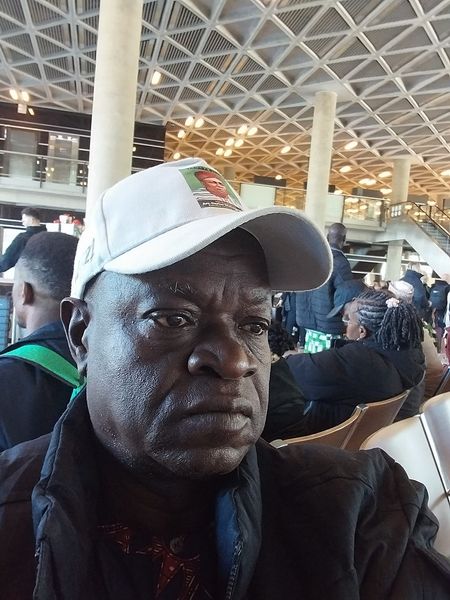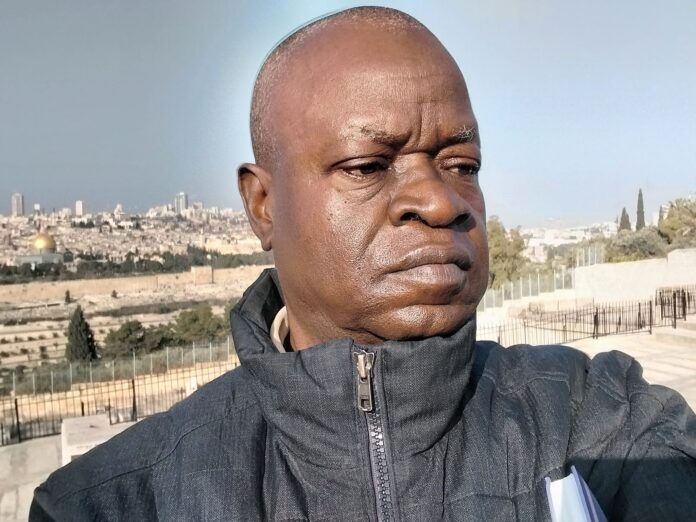The pilgrims ended their pilgrimage to The Holy Land with award of Jerusalem Pilgrims (JP) or Jesus’ People before their departure to Nigeria
By Sukuji Bakoji
Israel. The Christian Holy Land. There is no place in the world like it. A pilgrimage there is one of the greatest privilege every Chritian pilgrim will ever experience. It is a journey of a lifetime and never-to-be-forgotten experience.
Pilgrim must have waited for a rare opportunity to visit the Holy Land and walks where Jesus had walked. In short, setting a foot on Israel is beyond description: the natural beauty of the Holy City of Jerusalem, great historical and holy sites across the Holy Land which consist of the modern-day Israel, the Palestinian territories, Lebanon, western Jordan and southern Syria.
It was in the early hours of Tuesday, December 27, 2022 that Christian pilgrims from Taraba State departed Yola International Airport on board Jordanian Airways and landed at Queen Alia International Airport, Amman, capital of Hashimite Kingdom of Jordan, after nearly seven hours flight.
The first port of call during the pilgrimage was a visit to Umm Qais, an ancient ruins of biblical Gadarene town and Roman city. It is the biblical location where Jesus cast out legion of demons into herds of swine which ran and drowned in the Sea of Galilee as captured in three synoptic Gospels of Matthew 8: 28 – 34; Mark 5: 1 – 20; and Luke 8: 26 – 39.
READ ALSO:
Nigerians resort to barter trade in villages as cash shortage bites
The pilgrims then proceeded to Mount Nebo the place where God granted Moses a view of the Promised Land before his death (Deuteronomy 35:1 – 5). The view from the summit of the mountain provides a panoramic view of the Jordan Valley, Golan Heights, Sea of Galilee, Jerusalem, and Jericho.
At the mountain are a sculpture of the brazen bronze snake, a Christian Chapel built during the Byzantine times, Olive trees planted by Pope John Paul II in March 2000, Mosaic floor and other religious relics.
The pilgrims also visited River Jabbok (a tributary of the River Jordan). According to the biblical account, Jacob, son of Isaac and twin brother of Esau, wrestled with an angel all through one night on the bank of the river (Genesis 32:22-30). At dawn the angel wanted to go but Jacob refused, insisting, “I will not let you go unless you bless me.” The angel then blessed him and changed his name from Jacob to Israel, meaning, “One who prevails with God.”
The pilgrims were then driven through Allenby border of Jordan and Israel to visit Qumran, a famous hiding place of the Dead Sea Scrolls, a literary treasure trove hidden since shortly after the time of Christ. The scrolls include at least fragments of every book of the Old Testament except the book of Esther.
The pilgrims were on the Mount of Olives in continuation of their pilgrimage in the Holy City of Jerusalem. The Mount of Olives serves as the best observation point over Jerusalem. The Mount of Olives was named for the olive groves that lined up the hillside till this day. This holy site is associated with Judaism, Christianity, and Islam, and has been used as a place of prayers and cemeteries of the Jews since the days of the First Temple built by King Solomon. The ascension of Jesus Christ to Heaven took place on the Mount of Olives (Acts1:9-12). And on the Last Day Jesus will descend on the mountain to judge both the living and the death.
They then went down the road where Jesus entered the Holy City of Jerusalem as a King which is commemorated on Palm Sunday. They were at the Garden of Gethsemane where Jesus was arrested.

They then crossed the Kindron Valley and entered the Holy City and visited the Church of St. Anne (birthplace of mother of Virgin Mary) and the pools of Bethesda. From there they embarked on the 14 Stations of the Cross (called Via Dolorosa), meandering through the popular Jaffa Market, to the Golgotha Hill, where Jesus was crucified, buried and resurrected, all within the Church of Holy Sepulchre.
The pilgrims then proceeded to the Wailing Wall where they prayed and stuffed their written prayers through the wall. They drove to Mount Zion to visit the Last Supper Room, the Tomb of King David, the Church of St. Peter in Gallicantu (where Peter denied knowing Jesus three times before cock crew) and the underground dungeon where Jesus was kept overnight before his trial by Pontus Pilate.
The pilgrims continued their pilgrimage to the City of Nazareth and visited the Church of Annunciation where Angel Gabriel appeared and announced to Virgin Mary that she was about to give birth of Jesus (Luke 1:26). They also visited the Church of St. Joseph built over the Carpentry workshop of St. Joseph, the husband of the Virgin Mary. They proceeded to Cana to visit the Wedding Church where Jesus performed His first miracle by turning water into wine at wedding ceremony.
At the City of Bethlehem, the pilgrims visited the Church of Nativity or Basilica of the Nativity, the birthplace of Jesus Christ. It contains three churches belonging to the Roman Catholic, Greek Orthodox and Amenian Apostolic. They also visited Shepherds’ Field where the angels announced to shepherds the birth of Jesus.
The pilgrims traveled to Tabgba also known as the Church of Multiplication of fish and loaves of bread and fed over 5,000 people (Mark 6). They were at the Mount of Beatitudes where Jesus had His famous Discourse called the Sermon on the Mount (Matthew 5:1-12). They then proceeded to Capernahum popularly called the Town of Jesus and visited the ancient Synagogue and the house of St. Peter where his mother-in-law was healed of fever by Jesus. There is a Chapel built by Franciscan Fathers of the Catholic Church. Ironically the town which witnessed numerous miracles of Jesus is no longer inhabited by human beings because He cursed it.
The pilgrims also climbed Mount Tabor and visited the Church of Transfiguration which contains Chapel of Moses and Elijah. The were made to understand that even though God did not allow Moses to set his foot on the Promised Land (the Holy Land), he appeared at the mountain along with Prophet Elijah before Jesus Christ.
The pilgrims were driven to the Baptismal Site of Jesus at River Jordan where pilgrims from different parts of the world trooped to either to be baptized or for sight-seeing.
They further traveled to Jericho or City of Palms, the oldest city in world, about 10,000 years old and took cable cars ride to Mount of Temptation where Jesus was tempted by Satan after fasting for 40 days and 40 nights. They also visited to Spring of Elisha before proceeding to the Dead Sea the lowest point on earth.
The Dead Sea shimmers like a blue mirror under all-day sunshine, and is one of the most unusual bodies of water in the world where no living things live. It is loaded with minerals that no fish can live in. It is so dense that bathers can lie back on its surface and read a newspaper without sinking no matter the weight of the person.
The pilgrims ended their pilgrimage with award of Jerusalem Pilgrims (JP) or Jesus’ People before their departure to Nigeria on board Jordanian Airways.
Sukuji Bakoji JP, a journalist, wrote from Jalingo, Taraba State











